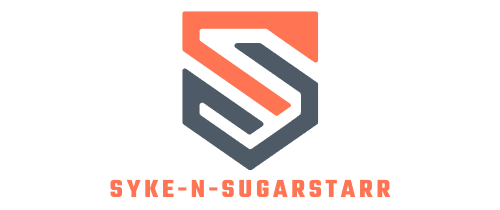In this digitally dominated age, online education is a thriving sector, with numerous universities and institutions offering a plethora of courses to students across the globe. However, a challenge that often arises is ensuring complete accessibility for disabled students. It’s crucial that all students, regardless of their physical or mental abilities, have equal opportunities to learn, grow and excel in their chosen fields. Therefore, in this article, we will discuss various ways UK-based online education providers can ensure accessibility for disabled students.
Understanding the Concept of Accessibility in Online Learning
Creating an accessible learning environment does not merely mean making content available for students. Rather, it encompasses a much broader perspective, accounting for the diverse needs of students, including those with disabilities.
En parallèle : What Are the Innovative Payment Solutions for UK Freelancers Dealing with International Clients?
Accessibility in online learning refers to the ability of all students, especially those with disabilities, to access, use and benefit from all educational resources, services, and tools without any hindrances. An accessible online learning environment ensures that every student, regardless of any disability they may have, can participate fully in all aspects of learning, thereby promoting education equality.
One of the key principles of accessibility is making ‘reasonable adjustments’ to the learning environment or content to accommodate the needs of disabled students. This could include alterations to the website, adaptation of content for assistive technologies, and provision of support services, among others.
En parallèle : How Can UK Fashion Retailers Utilize Augmented Reality for Virtual Fittings?
Implementing Website Accessibility
A university’s website is often the first point of contact for students seeking information about the courses, faculty, resources, and other services. Therefore, it’s essential that the website is accessible to all users, including those with disabilities.
To ensure website accessibility, online education providers need to adhere to the Web Content Accessibility Guidelines (WCAG) 2.1. These guidelines provide a wide range of recommendations for making web content more accessible to people with disabilities, including blindness, low vision, deafness, hearing loss, learning disabilities, cognitive limitations, limited movement, speech disabilities and photosensitivity.
Examples of adjustments that could be made include providing alternative text for images, ensuring sufficient contrast between text and background, offering resizable text, and ensuring that all functionality is available from a keyboard.
Adapting Digital Learning Content
After ensuring website accessibility, the next step is to adapt the learning content for disabled students. This includes making online lectures, course materials, assignments, assessments, and other learning resources accessible.
Audio visual content, such as video lectures and presentations, should be captioned or transcribed. Textual content should be made compatible with screen readers. Assignments and assessments should be designed in such a way that they are accessible to students with different types of disabilities. For instance, students with dyslexia might need longer time to complete assignments, while students with motor impairments might require alternative ways of inputting their responses.
Moreover, online education providers should consider offering different formats of the same content to cater to students with different needs. For example, a PDF document could be accompanied by an audio version, a simplified text version, or a braille version.
Providing Support Services
Support services are a crucial component of a disabled-friendly online learning environment. These services include additional tutoring, counselling, technical support, and accessibility services.
Tutoring services can offer individualized instruction to disabled students, helping them to overcome any learning barriers. Counselling services can provide emotional and mental health support, helping students to cope with the challenges of online learning. Technical support can assist students in using various digital tools and platforms, while accessibility services can ensure that all educational materials and resources are accessible to disabled students.
Promoting Equality Through Policy and Practice
Finally, promoting accessibility for disabled students requires not just tangible changes to the learning environment and content, but also changes in policies and practices. Online education providers must have anti-discrimination policies in place, which explicitly prohibit discrimination against disabled students and ensure equal opportunities for all.
Practices that promote equality include providing disability awareness training to staff, encouraging inclusive teaching methods, ensuring participation of disabled students in decision-making processes, and regularly reviewing and updating accessibility measures.
In conclusion, ensuring accessibility for disabled students in online learning requires a holistic approach that includes website accessibility, adaptation of learning content, provision of support services, and promotion of equality through policy and practice. With the right measures in place, online education providers in the UK can create a learning environment where all students, including those with disabilities, can thrive.
Collaborating with Sector Bodies and Universities Colleges
Online education providers can significantly enhance accessibility for disabled students by collaborating with relevant sector bodies and universities colleges. Such joint efforts can help in sharing best practices, pooling resources, and creating a more inclusive and accessible online learning environment.
For instance, many sector bodies, like the Quality Assurance Agency for Higher Education (QAA), the Office for Students (OfS) and others, provide guidance and resources to help education providers improve accessibility. These resources can include accessibility checklists, examples of reasonable adjustments, case studies, training materials, and other useful tools.
Similarly, universities and colleges can share their experiences and insights in implementing accessibility measures, helping other institutions to learn from their successes and challenges. They can provide practical examples of how they have used assistive technology, adapted course content, provided support services, and made other adjustments to ensure accessibility for disabled students.
Moreover, such collaborations can also extend to regular meetings, forums, or conferences where education providers can discuss their accessibility initiatives, share ideas, and learn from each other. These platforms can help to foster a culture of continuous learning and improvement in the higher education sector regarding accessibility.
Accessibility Regulations and Their Impact on Online Learning
While it’s ethical and necessary to ensure accessibility for disabled students, it’s also a legal requirement. UK-based online education providers must comply with various accessibility regulations, including the Equality Act 2010 and the Public Sector Bodies (Websites and Mobile Applications) (No. 2) Accessibility Regulations 2018.
The Equality Act 2010 mandates that service providers, including education providers, must make reasonable adjustments for disabled people to ensure they can access and use their services. This includes making sure their websites and online learning platforms are accessible.
The Public Sector Bodies Accessibility Regulations require public sector bodies, including universities and colleges, to make their websites and mobile applications accessible. This is measured against the standards set out in the Web Content Accessibility Guidelines 2.1.
Non-compliance with these regulations can result in legal action and can damage the reputation of the education provider. Therefore, besides the moral obligation, adherence to accessibility regulations is also crucial for maintaining the credibility and legality of online education providers.
Conclusion
In the evolving landscape of online learning, ensuring accessibility for all students, including those with disabilities, is of utmost importance. UK-based online education providers have the opportunity, and responsibility, to adopt comprehensive strategies to make learning materials, platforms, and support structures fully accessible.
From understanding the concept of accessibility in online learning to implementing website accessibility, adapting digital learning content, providing support services, promoting equality through policy and practice, collaborating with sector bodies and universities colleges, and adhering to accessibility regulations, the road to complete accessibility is a continuous journey.
Making reasonable adjustments, using assistive technology, offering mental health support, collaborating with sector bodies and universities colleges, and respecting disability rights are all key factors in this process. By focusing on these areas, education providers can ensure that disabled students not only have equal access to education, but also the opportunity to excel in their chosen fields.
As we move forward, the commitment to ensuring accessibility in online education will play a pivotal role in shaping an inclusive, diverse, and equitable learning environment where every student has the chance to succeed. After all, accessibility in online learning is not just about compliance with regulations – it’s about human rights, social inclusion, and educational equity.






